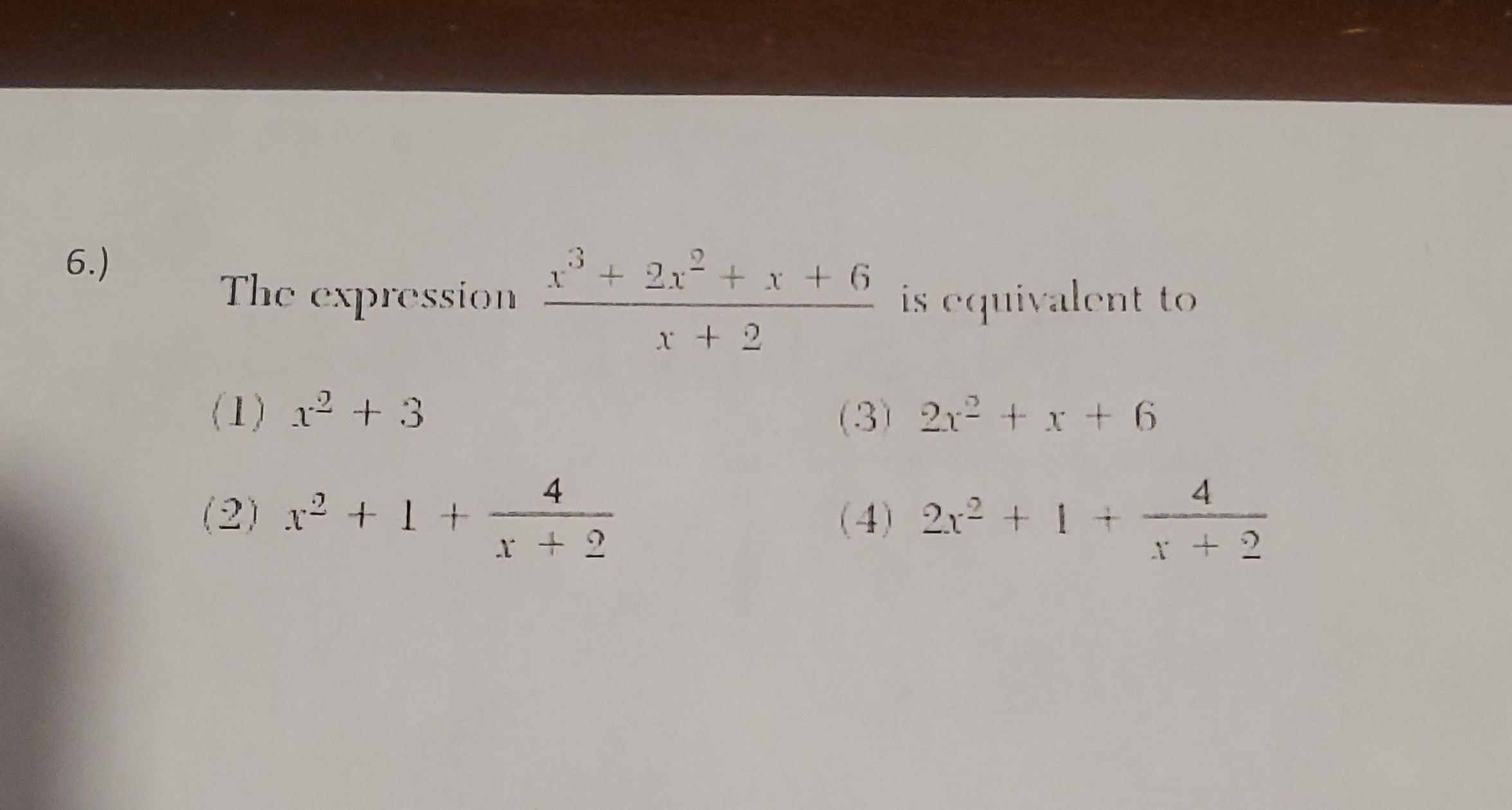AI tutor
Full solution
Q. The expression is equivalent to() () () ()
- Perform Division: Perform polynomial long division or synthetic division to simplify the expression.We will divide the polynomial by .
- Set Up: Set up the division.Write under the division bar and outside the division bar.
- Divide First Term: Divide the first term of the dividend by the first term of the divisor.
- Multiply and Subtract: Multiply the divisor by the result from the previous step.Multiply by to get .Write this result under the corresponding terms of the dividend.
- Repeat Division: Subtract the result from the previous step from the dividend.Subtract from to get .Bring down the next term of the dividend, which is .
- Divide Next Term: Repeat the division process with the new dividend.Divide by to get .Write above the division bar next to .
- Multiply and Subtract: Multiply the divisor by the result from the previous step.Multiply by to get .Write this result under the corresponding terms of the new dividend.
- Repeat Division: Subtract the result from the previous step from the new dividend. Subtract from to get . Bring down the next term of the dividend, which is .
- Add Final Term: Repeat the division process with the new dividend.Divide by to get , since cannot be divided by to give a polynomial term.Write above the division bar next to .
- Write Final Result: Add the final term of the dividend to the remainder.The remainder is now , which simplifies to .
- Match with Options: Write the final result of the division.The quotient is , and the remainder is .The expression can be written as .
- Match with Options: Write the final result of the division.The quotient is , and the remainder is .The expression can be written as .Match the result with the given options.The equivalent expression is , which corresponds to option .
More problems from Multiplication with rational exponents
QuestionGet tutor help
QuestionGet tutor help
QuestionGet tutor help
QuestionGet tutor help
QuestionGet tutor help

